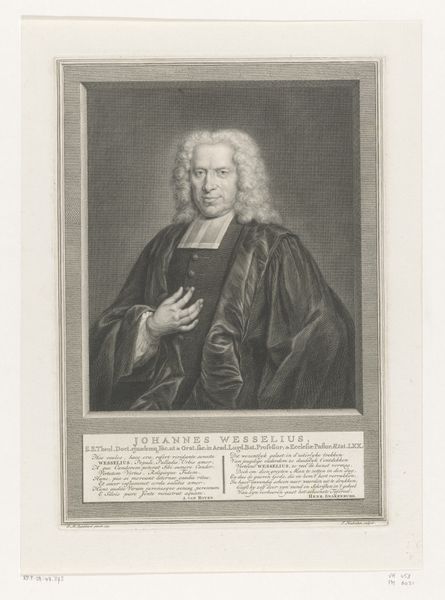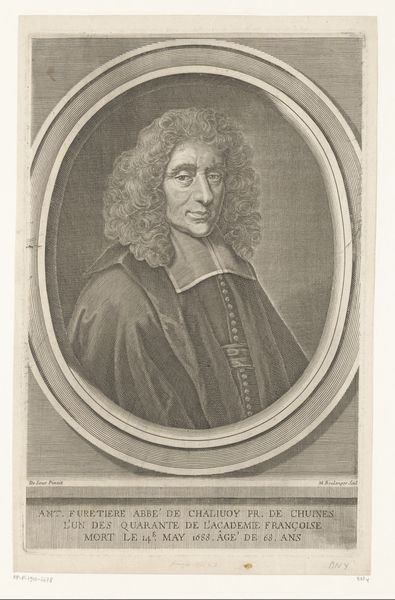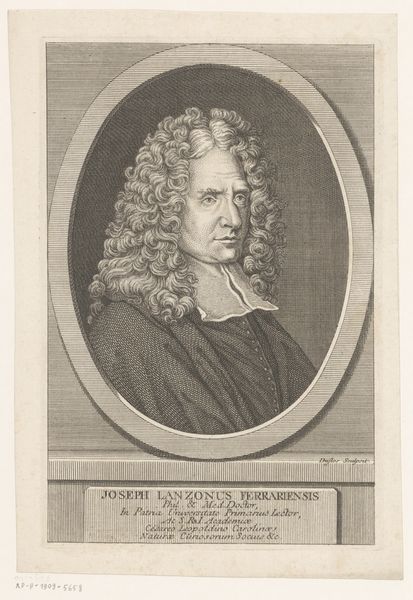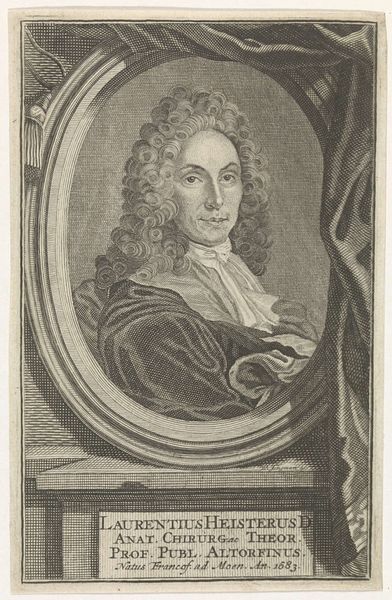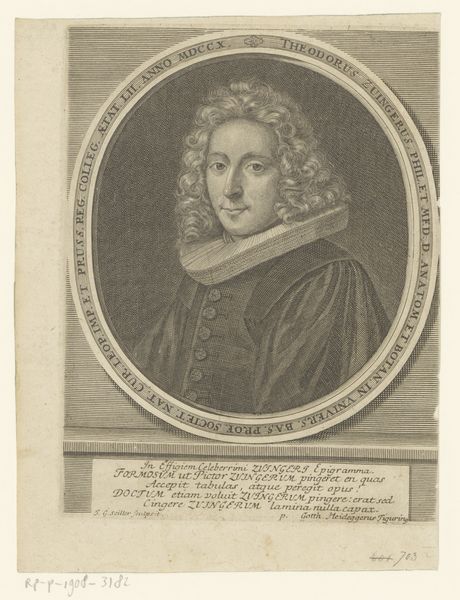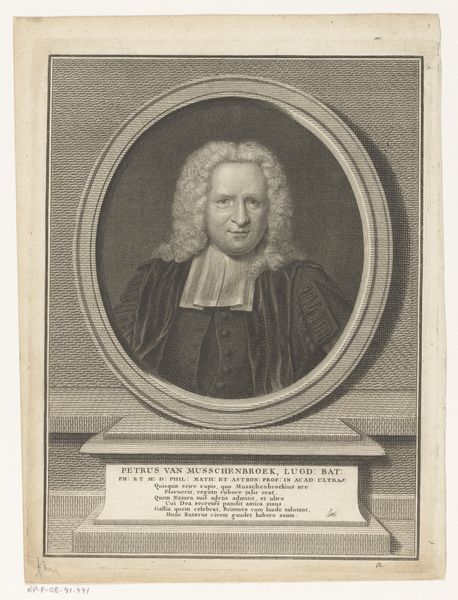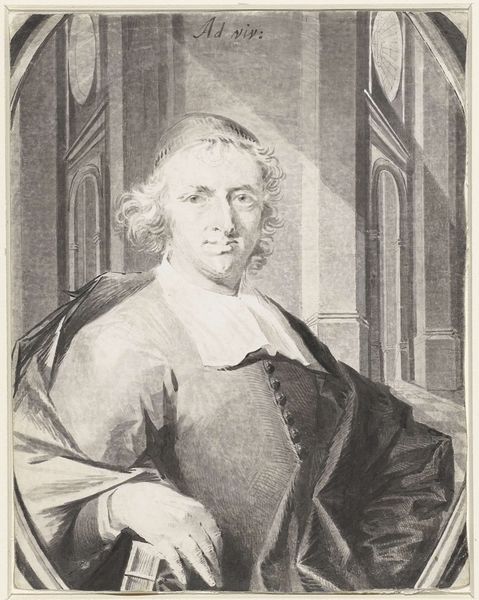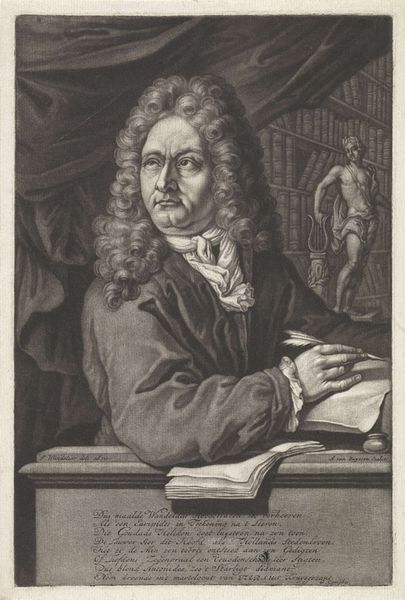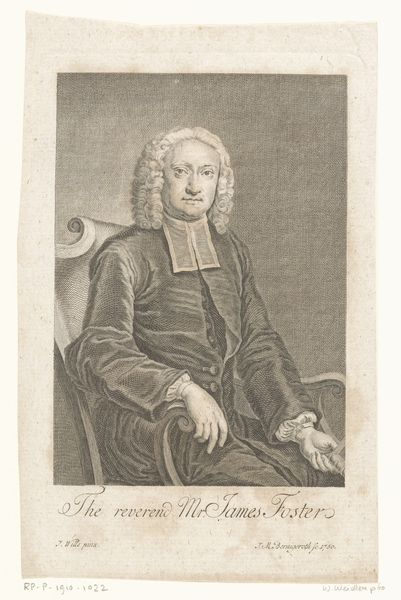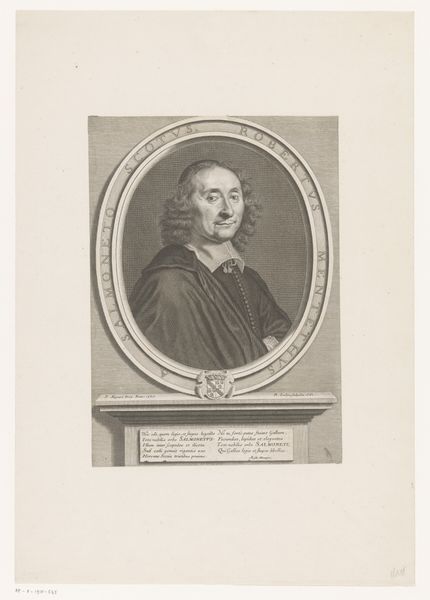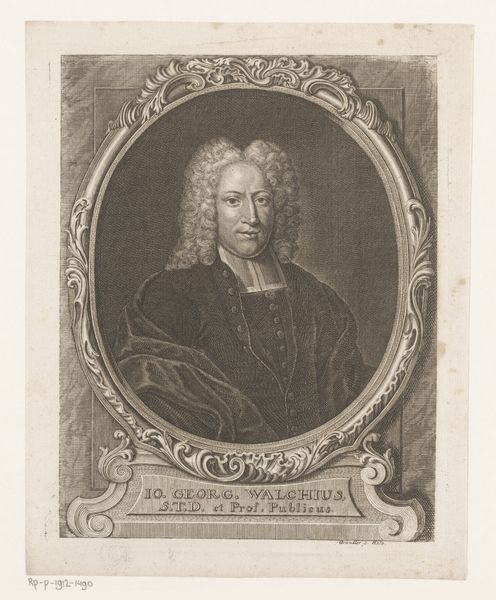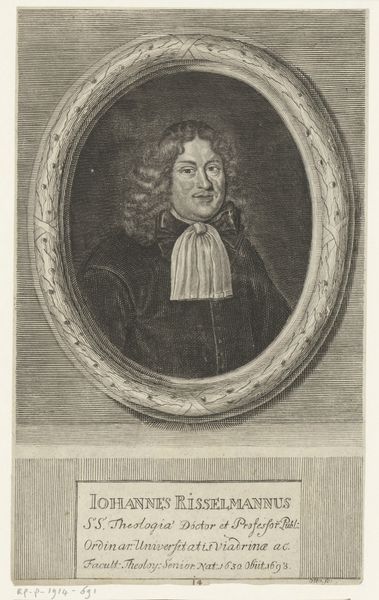
Portret van Simon Dubois met een portret van Henry Cooke in zijn hand 1730 - 1763
0:00
0:00
print, engraving
#
portrait
#
baroque
# print
#
old engraving style
#
portrait drawing
#
engraving
Dimensions: height 166 mm, width 127 mm
Copyright: Rijks Museum: Open Domain
Curator: This is an engraving, "Portret van Simon Dubois met een portret van Henry Cooke in zijn hand", dating back to between 1730 and 1763, currently housed in the Rijksmuseum. The artist, Alexander Bannerman, captured Dubois holding an image of Cooke, both men prominent figures in their time. Editor: It has such a cool, almost detached feel. You immediately notice the contrasts and the subject's piercing gaze; the man seems completely self-possessed. The tight linework also suggests the texture of aged paper and historical weight. Curator: Yes, Bannerman's skill is clear when you look at the details. The way the lines create depth and form in the face, hair, and even the folds of the clothing really speak to the engraver’s careful, planned execution. The work is a feat of labor; each line carefully etched onto the plate. Editor: I'm particularly struck by what this engraving suggests about the artistic community of the time. To hold a portrait of Cooke suggests admiration or some sort of affiliation. Was there perhaps patronage or collaboration occurring? We must also consider the cultural meaning of portraying oneself with an image, and the impact that gesture has on the status and cultural influence of both sitter and the subject. Curator: It definitely begs the question of what their relationship was, how art functioned in that society and what the intent of portraying the connection was. Engravings such as this would circulate in books, displayed as art or owned for self promotion. It gives us a tangible object through which to consider the economy of print. Editor: It provides insight into the power dynamics, and how artists promoted themselves within social circles, it highlights the role of images in the establishment and propagation of social networks in the Baroque era. Curator: Indeed. Thinking about the layers of production—from Dubois sitting for the initial portrait to Bannerman painstakingly creating the engraving for consumption—allows a material understanding that extends far beyond simply visual interpretation. Editor: Examining its historical context certainly makes you appreciate the intricacies of image circulation during the time and makes me curious to research more about the social world it reflects. Curator: It reminds me that seemingly simple artworks have layers of cultural context waiting to be peeled back.
Comments
No comments
Be the first to comment and join the conversation on the ultimate creative platform.
